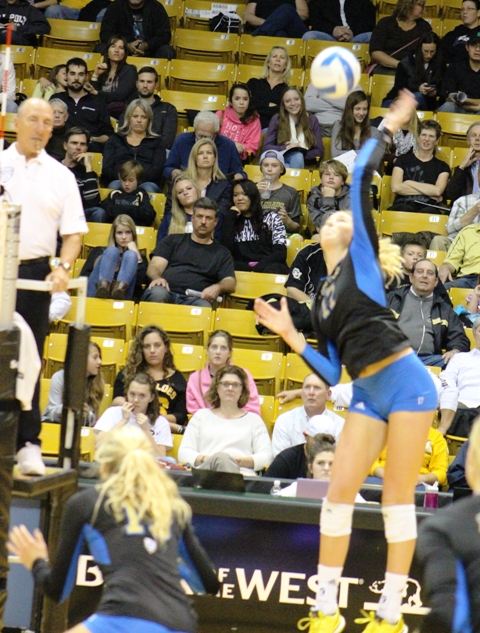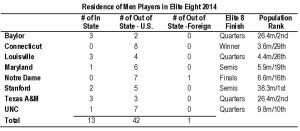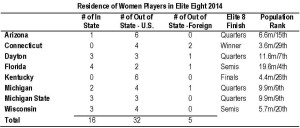Are you a junior volleyball player thinking about playing on your favorite PAC-12 volleyball team?
If so, you have to be good – really good!
The following stats from the 2014-2015 season may help you understand your chances of playing in one of the country’s elite volleyball conference:
• There were 120 players who played more than half the sets. In other words, the coaches generally had rotations of 9 or 10 players and occasionally 11 or 12 players.
• The PAC-12 is a regional conference. Almost 3-in-4 of the players were from the 6 states where PAC-12 universities were located.
• About 43% of the players on all teams were from California. Each of the teams had at least 2 Californians. It seems there is a mandate that coaches and recruiters live and breathe the words of the infamous Beach Boys tune, “I Wish they All Could be California Girls.”
• The more successful teams had a higher percentage of out-of-state players. As well, they had a greater percentage of California players. In other words, the top teams more effectively attracted the top players from in-state and other states.
• Unlike some other sports, only about 8% of total players are from foreign countries. It is ironic that American players have to play professional ball overseas; however, overseas athletes don’t dominate U.S. college volleyball.
Specifically, the PAC-12 players reside in the following states:
• 52 players were from California.
• 9 Players were from Arizona.
• 8 Players were from Oregon.
• 7 Players were from Utah.
• 7 players were from Texas.
• 6 players were from Colorado (3 of the players were sisters who played on the same team).
• 5 players were from Washington.
• 4 players were from Hawaii.
• 12 players were from 9 other states.
PAC-12 Volleyball is clearly the conference of choice – both for players and coaches. Unfortunately, only a handful players make the cut. Hopefully, you are one of them!




